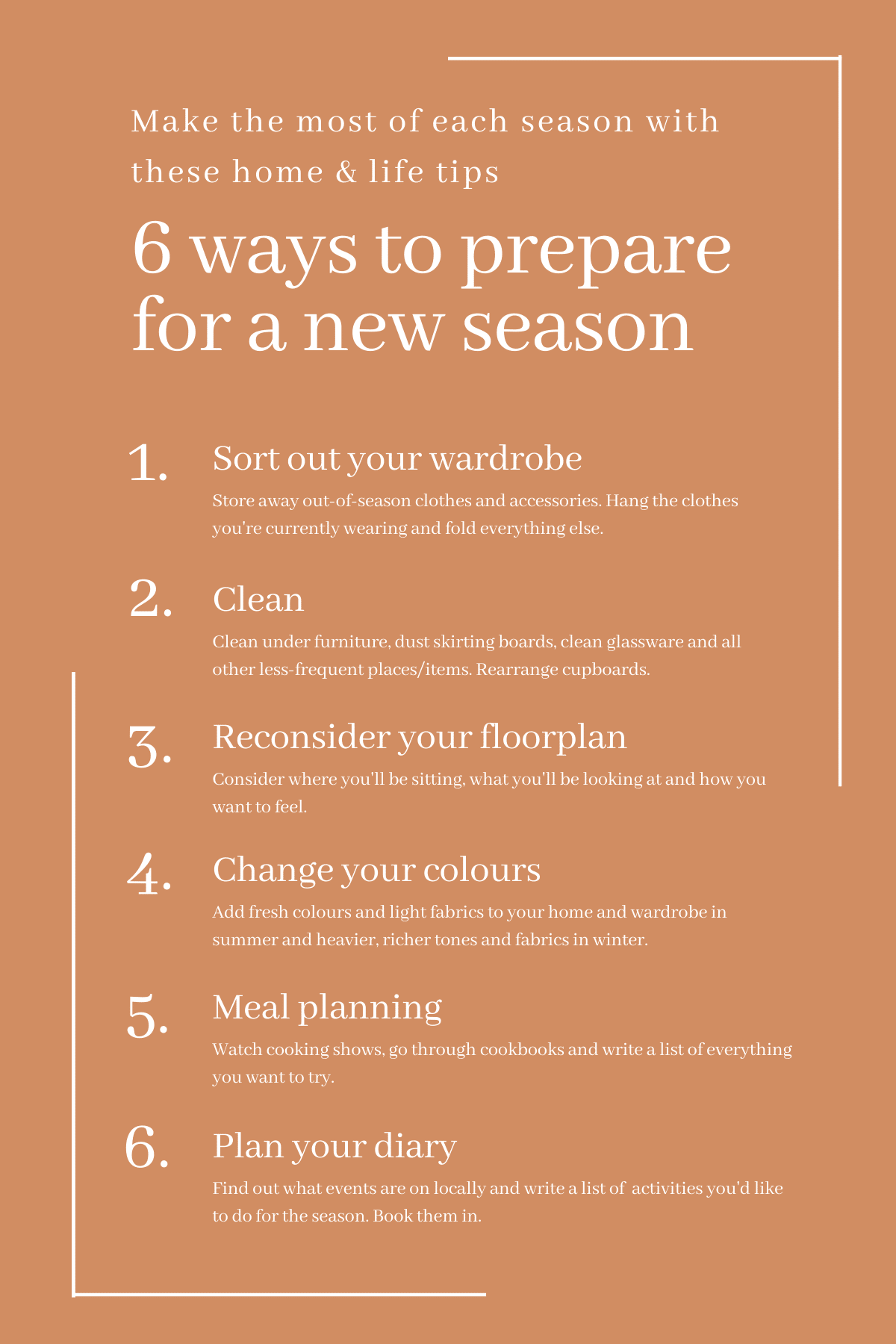How to Prepare For a New Season
How to organise your wardrobe, style your home and prepare your calendar for spring, summer, autumn and winter
LAST UPDATED: 01/03/2021
I’m obsessed with living seasonally. I believe that one of the best ways of feeling like you’re in the moment is being aware of and in alignment with the season you’re experiencing.
It’s the same as how most people prepare for and get excited about Christmas. The changing from one season to another and the rituals I follow in preparation excites me massively. Then there is the gradual shift with each day, the unfolding of the year and the everyday practices carried out to honour where we’re at, which is a beautiful way to live.
There are several ways I prepare for a new season. The following list is by no means exhaustive. And, of course, there will likely be items that don’t interest you personally. I’m not saying you need to do all of these things, or indeed any of them. But hopefully, it’ll give you an idea of some changes you can make at the start of a season that might help you appreciate and enjoy it a bit more.
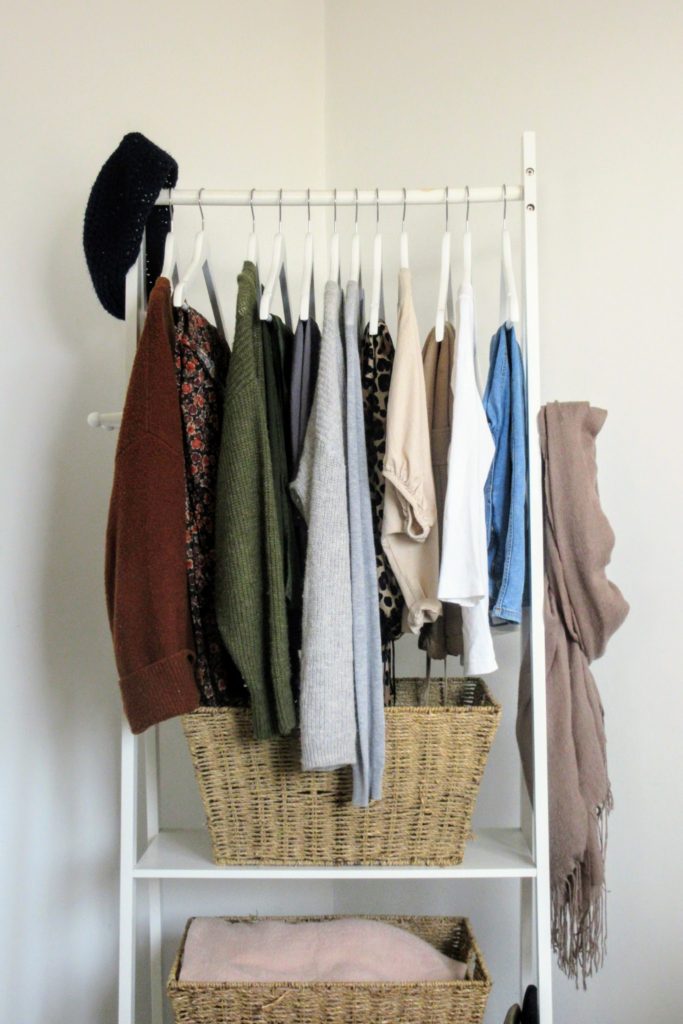
1. Sort out your wardrobe
I get lots of people asking me if what I keep on my clothes rails is everything I own. The answer is no. I have quite a lot of clothes and quite a lot of accessories. The reason they’re not all on the rails is that I choose to keep out only what I’m currently wearing.
So, every three months in the run-up to a new season, I go through all my clothes and accessories, picking out everything I think I might need/like to wear. I make sure to include things I’ll need at either end of the season, such as warmer and lighter items. Then, I put away everything I know I definitely won’t wear/need.
Storing out-of-season clothes
Clothing goes into vacuum storage bags and accessories into boxes. I store it all under my bed, but if you don’t have space, you could dedicate a cupboard for it or a section of your wardrobe if it’s big enough. It might seem a bit silly putting things back into your wardrobe, and in fact, you might think this whole process a lot of effort. If it’s not for you, don’t do it. But I find it’s a great way to take stock of what you have, try things on, get a few new ideas for outfits, get excited about what’s been hiding away in storage and is now coming back out. It also makes getting ready so much easier as you’ll be able to see at a glance what you’ve got, knowing that everything is suitable for the current weather.
Organising in-season clothes
To organise my clothes for the season, I start by hanging everything that I’m currently wearing lots. Then everything I think I’m going to wear in the coming weeks. I fold everything else. So, all my heavier items get hung at the start of spring, gradually shifting to lighter items as the season goes on. What this means is that everything I need frequently is easy to find. I don’t have to waste time folding clothes very often, as I’ve folded the clothes I wear the least.
Visit my wardrobe and dressing room organising page for information on how I can help you build your dream closet.

2. Clean
I have daily, weekly, fortnightly, monthly and seasonally cleaning/tidying schedules. The seasonal one includes tasks such as dusting the skirting boards, cleaning the oven (unless it desperately needs it sooner) and moving large pieces of furniture to hoover underneath. I also take everything out of my cupboards to clean them out, putting everything back in a way that makes sense for the coming season. For example, I may move my slower cooker to the front of my cupboard for Autumn/Winter when I’ll use it more.
I’ll also clean tiles and walls where required and glassware that needs it. I use distilled vinegar and some bicarb soda on glass – leaving it for a few minutes to remove stains.
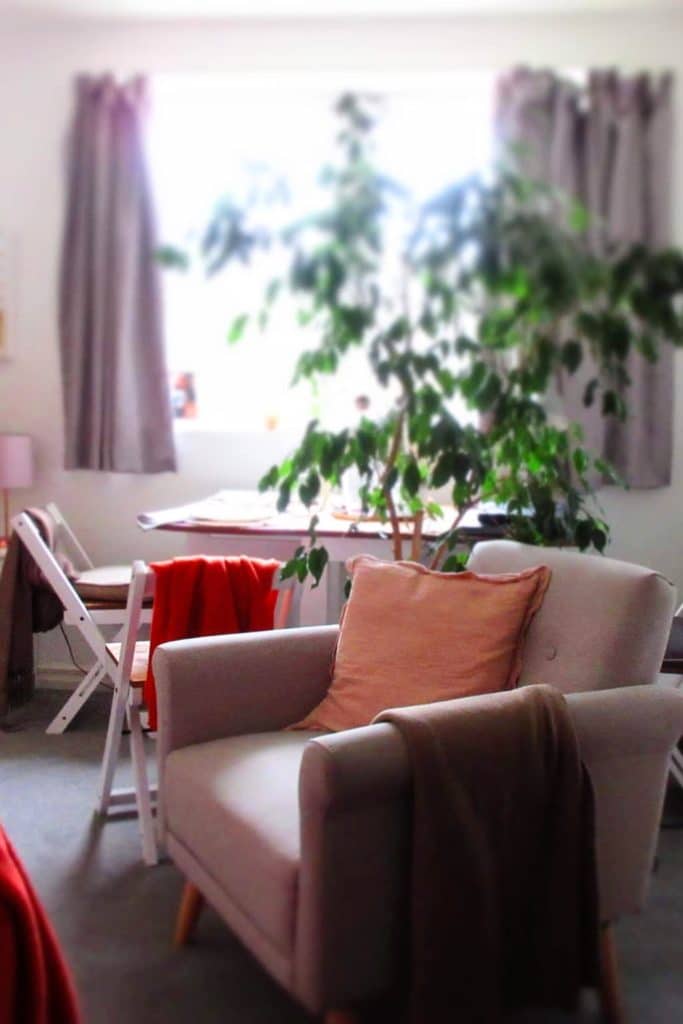
3. Reconsider your floorplan
Most people decide where their furniture is going and leave it there. But I like for things to be changing and evolving with the seasons, and I believe even furniture can be a part of that.
Consider the light
The sun will shine on different parts of a room at varying times throughout the year. So, take into consideration where you’ll be sitting at roughly what time. Think about what you’re going to be able to see. For example, there might be a spot in your home where you can see the sunrise or sunset during the winter months. Or maybe there are areas of your home which are too bright to sit in during the summer months? Windows which might be too bright to face?
Get a feel for the season
You might like to move key pieces of furniture closer to a window in the summer for a more outdoorsy, breezy feel. Or closer to the centre of your home in winter for a warmer, cosier feel. Do you want to face a window in the winter so you can see the limited sunlight, or is it too gloomy for you? Would you prefer to be facing a fireplace? One practical way you could put this into practice is moving your dining table closer to a window in the summer, which makes for the feeling of alfresco dining on days where you’d rather eat indoors.
Create zones
Finally, you could create new zones/areas, like a cosy reading corner for winter. You don’t have to go crazy and move everything. But making a few minor changes might make you excited for a new season. It’s also a great way of keeping things looking and feeling fresh.
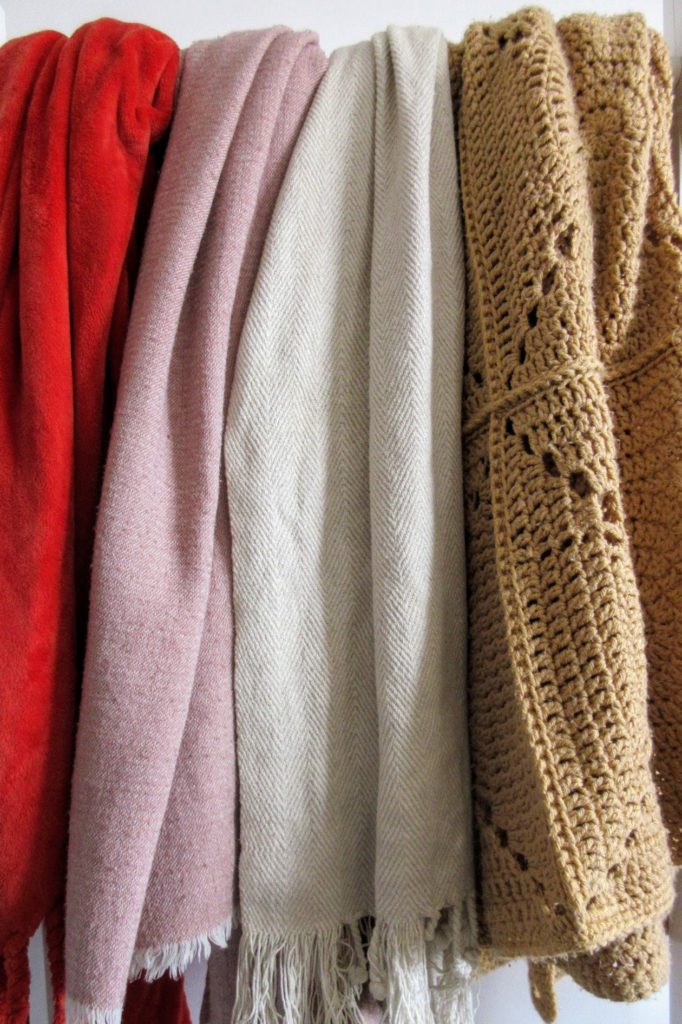
4. Change your colours
Most people decorate their home with their chosen colour scheme and leave it at that. But the colours of nature change with the seasons, and so could the colours of your home. It’s one of my favourite ways of honouring a new season.
Don’t panic. I’m not suggesting you redecorate every three months! Here’s what you could do. Think about what kinds of colours and tones you associate with each season. Lighter tones and fabrics in summer. Bright in spring. Warmer and more earthy tones in autumn. Rich tones and heavy or luxurious fabrics in winter. Take note of the colours of your home/room. Consider which shades you could add or remove for each season that would fit with the overall scheme. You’re choosing a colour palette, but the palette will adapt slightly with the season.
Say your home is in blues, greens, whites and greys. You could keep the white and grey as your neutral tones – ones that stay the same all year round – they are your base. You could also have a shade or two of colour that remains the same all year round. Then, pick a colour, say blue, and choose two to four shades of it. A lighter, muted spring/summer blue and a warmer autumn/winter blue. You can buy little accessories in your seasonal shades, like blankets, cushion covers or candles. They don’t have to be expensive. At the turn of the season, put your current ones away and take out your new ones. It could mean swapping a heavy, dark blue blanket out for a lighter, cooler one. It’s an easy way of giving a little nod to the new season without changing too much.
Want help arranging, organising or styling your home? Check out my in-house or virtual organising services.
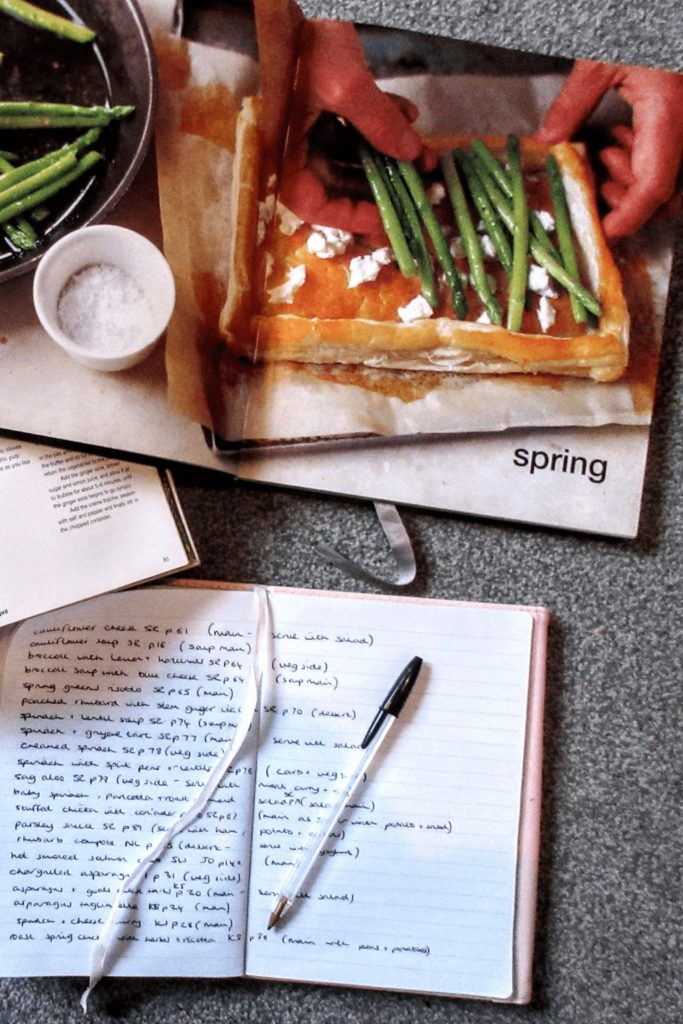
5. Meal planning
In the weeks coming up to a new season, I’ll dedicate some time to looking through my cookbooks/ Pinterest boards/ watching cooking shows.
I note down the recipes I’d like to cook, along with the book title and page number or link if it’s from a website. I also note down what kind of meal it is – dessert, main, side etc. – so I can see at a glance. Though, you could separate your meals into smaller lists.
Maybe this sounds exhausting to you, but I love it. I love cooking, I love eating seasonally, and I love to prepare. Eating seasonally and taking full advantage of what a season has to offer is one of the best ways of living in the moment. I know some people find the idea of eating seasonally too restrictive. I find it brings more pleasure into my life. I get excited about using ingredients I haven’t used in a while, eating food at its best. I enjoy celebrating it for a short time, then letting it go. It brings variety to life.
I also visit eattheseasons.co.uk, making a list of fruits I can buy to eat as a snack and vegetables that I can use as a healthy side. Then, when I meal-plan each week, I consult my recipes list as though it’s a menu.
I enjoy this ritual. It gets me in the mood for what’s coming next.
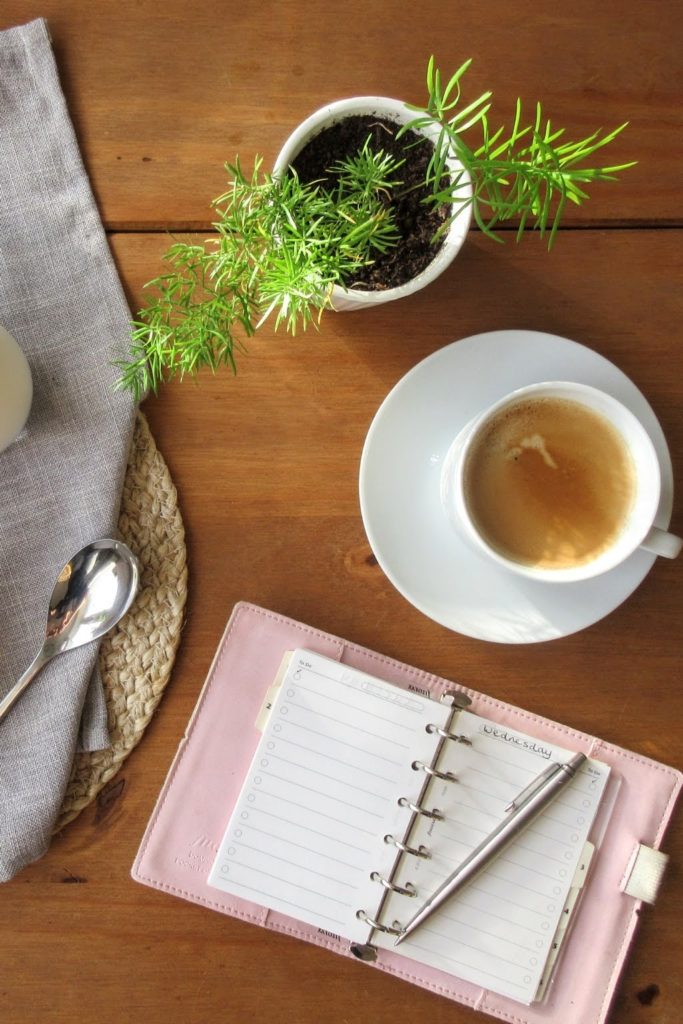
6. Plan your diary
I know life seems a bit samey at the moment – there isn’t much going on. But, I’ll share what I usually do to plan my diary, and hopefully, there’ll be something in it which you can use now and as the days get a bit brighter.
I spend time looking at upcoming events in the area. See what’s on at the theatre, cinema, etc. There are loads of zoom events out there – I know it’s not the same, but you could still be a part of something if you wanted to.
They don’t have to be expensive events. I also make a list of the activities I’d like to do to take advantage of the new season. It could be fruit picking, BBQs, picnics, or bike rides in summer, or reading books, movie and games nights, and baking in the autumn/winter. A few ideas on what you’d like to do more of and little ways you can immerse yourself into the coming season.
I then book these things into my calendar, as it encourages me to stick to them. But you could keep yours as a list, which you dip into when you want/can.
These are prime examples of how getting organised doesn’t only make your life easier, but more enjoyable.
I hope you’ve gotten something from these tips. I will look into each one in much greater detail as time goes on. Please let me know if you have any ideas you’d like to add or if you’d like to learn a little more about anything I’ve mentioned.
